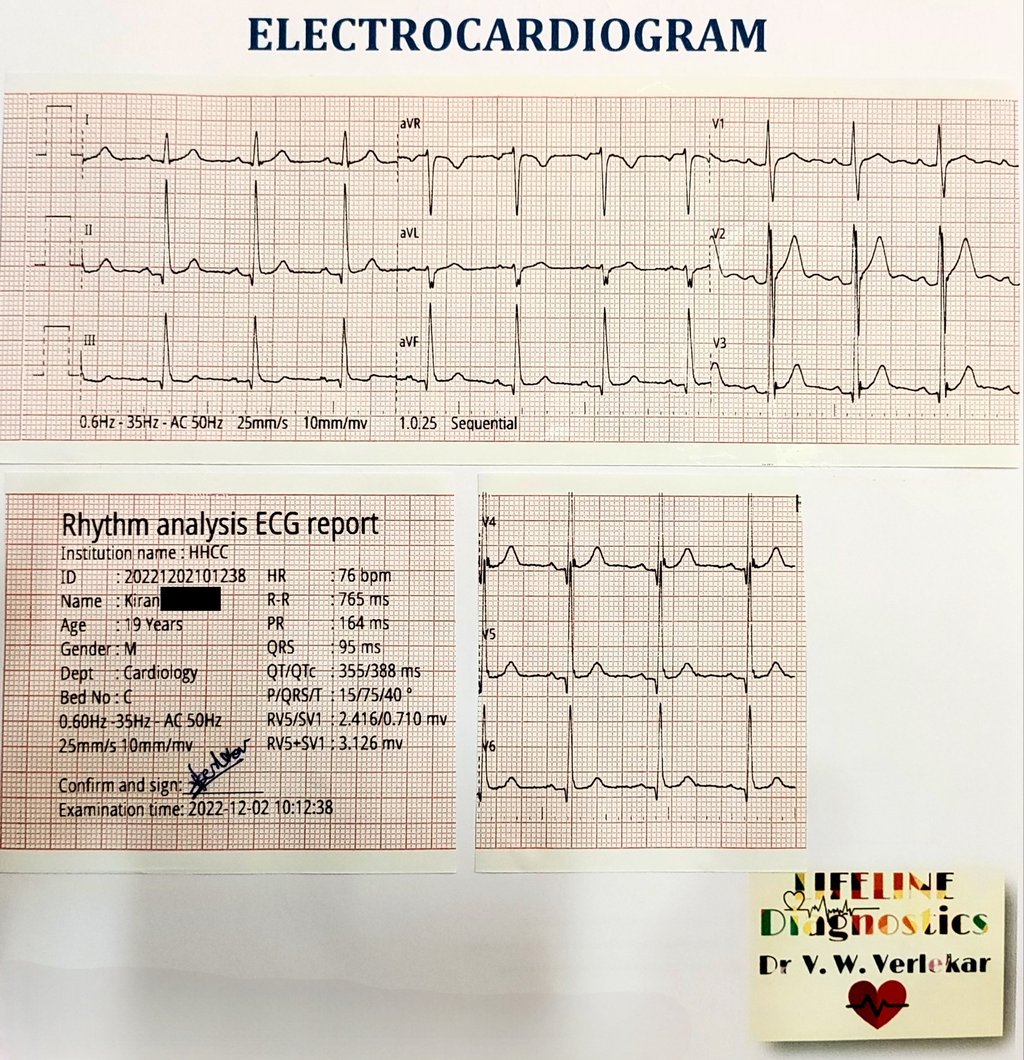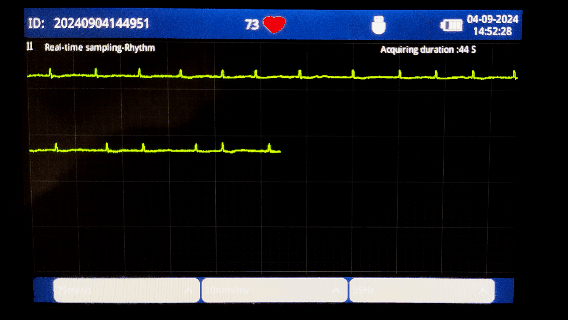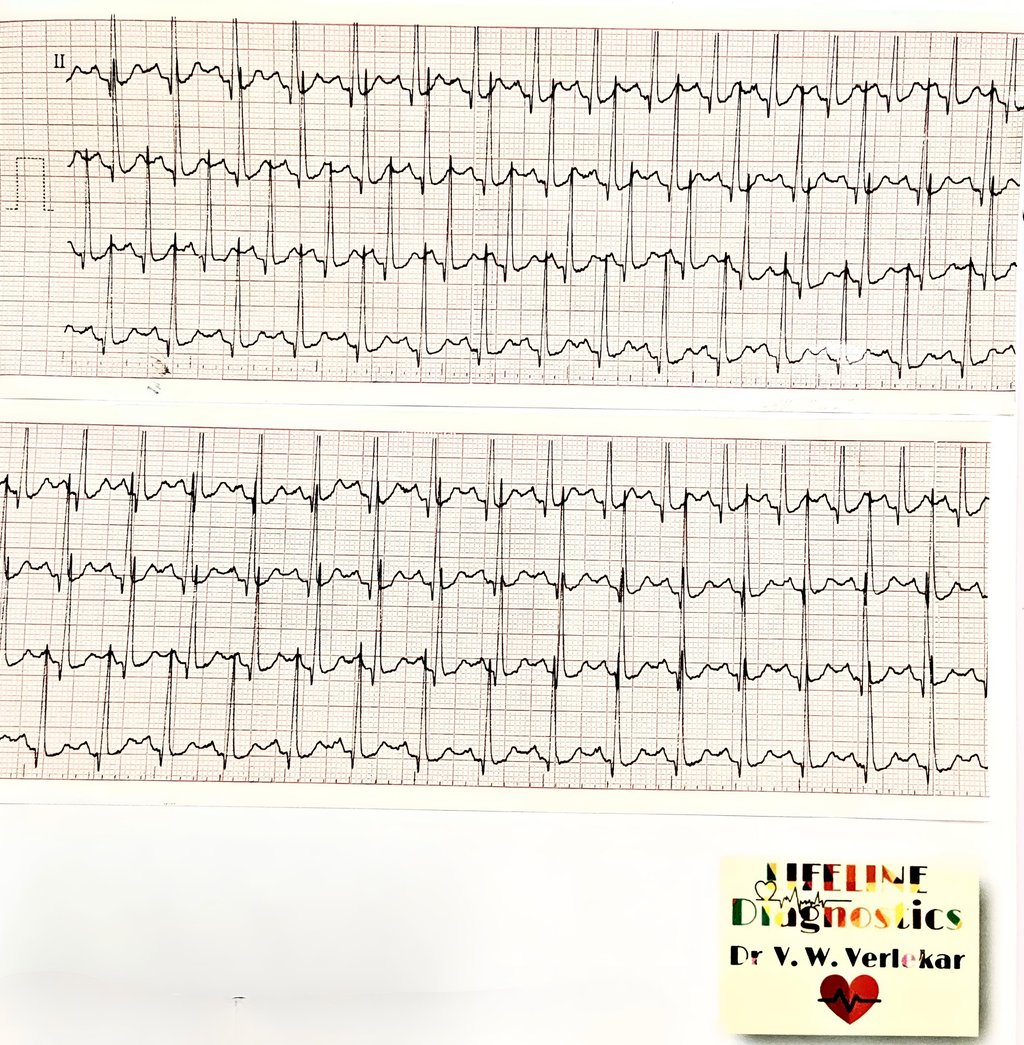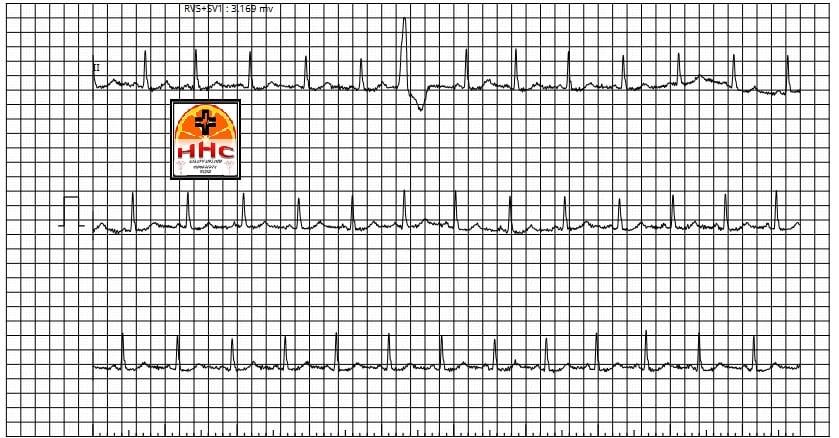Dr V. W. Verlekar
Exploring the Diagnostic Implications and Lesser known Uses of ECG
CARDIOLOGY
Dr V. W. Verlekar
12/30/20247 min read


Understanding ECG: The Basics
An electrocardiogram (ECG) is a crucial diagnostic tool used to assess the heart's electrical activity by recording its rhythm and function. The primary purpose of an ECG is to identify abnormal heart rhythms (arrhythmias), detect heart disease, and evaluate the overall heart condition in various patient demographics. This non-invasive procedure is vital for both diagnostic and monitoring purposes in medical settings.
The procedure involves placing electrodes on specific locations on the skin, typically on the chest, arms, and legs. Each electrode detects the electrical impulses generated by the heart as it beats. The collected data is then translated into a graphical representation, producing waveforms that indicate the heart's electrical cycle. The output consists of several components, such as the P wave, QRS complex, and T wave, each corresponding to different phases of the heart's contraction and relaxation.
These waveforms provide critical insights into heart health. For instance, the P wave signifies atrial depolarization, while the QRS complex reflects ventricular depolarization. Abnormalities in these waveforms can indicate various conditions, ranging from simple electrolyte imbalances to more serious issues such as myocardial infarction (heart attack) or cardiomyopathy.
ECGs are typically performed in clinical environments, where trained healthcare professionals can interpret the results accurately. The procedure itself is quick, requiring only a few minutes, thus making it an efficient option for initial heart assessments. Furthermore, while an ECG is often associated with acute care scenarios, it can also play a role in preventive medicine, allowing for the early identification of potential heart problems in asymptomatic individuals.


Primary Diagnostic Implications of ECG
The electrocardiogram (ECG) serves as a crucial tool in the field of cardiology, primarily utilized for the diagnosis of various heart conditions. One of its most significant applications is in the detection of arrhythmias, which are irregular heartbeats that may indicate underlying cardiac issues. Through a detailed assessment of the electrical activity of the heart, healthcare professionals can identify different types of arrhythmias, ranging from benign to life-threatening conditions, and implement immediate management strategies.
Another primary diagnostic implication of the ECG is its role in identifying myocardial infarctions, commonly known as heart attacks. The ECG can reveal characteristic changes in the heart's electrical patterns that are indicative of ischemia or myocardial damage. Timely recognition of these changes is critical as it allows for prompt intervention, potentially saving patients from severe complications or mortality. Moreover, ECGs can assist in assessing other significant cardiac abnormalities, such as atrial fibrillation, ventricular hypertrophy, and ischemic heart disease, further stressing the value of this diagnostic tool.
The interpretation of ECG results demands a keen understanding of the various waveforms and intervals, as well as the clinical context of the patient. An accurate reading can facilitate the diagnosis of heart disease, thus guiding healthcare providers in formulating appropriate treatment protocols. This timely interpretation can significantly influence patient outcomes, as it enables early initiation of therapeutic measures, ranging from lifestyle modifications to more aggressive interventions such as medication or surgical procedures.
In essence, the diagnostic implications of ECGs extend beyond merely recording electrical activity; they are vital for the accurate detection and management of cardiovascular diseases. As technology advances, the integration of ECGs with digital platforms promises even greater accessibility and efficiency in cardiac care.


ECG in Preoperative Assessment
The electrocardiogram (ECG) plays a pivotal role in the preoperative assessment of patients by providing crucial insights into their cardiac health. Before undergoing surgical procedures, particularly in individuals who are older or have existing comorbidities, it is essential to evaluate the cardiac risk associated with anesthesia and surgery. An ECG can reveal underlying cardiac conditions that may not be apparent during a standard physical examination, thus informing the surgical team about the patient's heart status.
A comprehensive ECG assessment aids in identifying arrhythmias, ischemic changes, and other cardiac abnormalities that could complicate a surgical procedure. For instance, the presence of significant ST-segment changes may indicate existing coronary artery disease, necessitating further cardiological evaluation or optimization before elective surgery. Similarly, abnormalities such as left ventricular hypertrophy or evidence of previous myocardial infarction can indicate a higher risk for postoperative complications, including cardiac events during or after surgery.
The importance of an ECG in preoperative assessments is underscored by its ability to guide clinical decisions. If a patient's ECG reveals concerning findings, further interventions such as cardiac consultation, stress testing, or adjustments in medication may be required. This proactive approach not only enhances the safety of surgical procedures but also reduces the likelihood of adverse postoperative outcomes. Moreover, effective communication of the ECG findings to the surgical team and anesthesiologists facilitates a better understanding of the patient's condition, allowing them to tailor their approach accordingly.
In conclusion, the ECG serves as an invaluable tool in the preoperative evaluation process, providing critical information about a patient’s cardiac health that directly influences surgical risk assessment and management. Ensuring a thorough ECG evaluation before surgery is essential for optimizing patient safety and ensuring favorable surgical outcomes.


Monitoring Cardiac Rehabilitation and Recovery
The role of electrocardiograms (ECGs) in monitoring patients during cardiac rehabilitation and recovery is of significant importance. After an event such as a heart attack or cardiac surgery, patients often enter rehabilitation programs designed to improve cardiovascular health, enhance physical function, and promote overall well-being. Continuous ECG monitoring is critical during these programs, enabling healthcare professionals to assess heart performance during various rehabilitation exercises.
During cardiac rehabilitation, patients typically engage in structured exercise routines aimed at improving their cardiovascular fitness. The ECG provides real-time data on heart rhythm and rate, which allows healthcare providers to ensure that the heart is responding appropriately to increased physical demands. By closely monitoring the ECG, clinicians can identify any irregularities or changes in cardiac function, ensuring that exercises remain within safe parameters for each individual.
Moreover, ECG monitoring is instrumental in minimizing the risks associated with exercise in patients with a history of heart diseases. Adjustments can be made in real-time, ensuring that patients do not exceed their heart's capability during rehabilitation. For instance, if an ECG indicates signs of distress, such as arrhythmias or significant changes in heart rate, modifications to the exercise regimen can be promptly implemented to prevent potential complications.
Additionally, ECGs can be utilized to motivate and educate patients about the significance of heart health. By visualizing their heart's response during exercise, patients can gain insights into their progress and understand the impact of physical activity on cardiac recovery. This feedback loop not only helps in building patient confidence but also fosters adherence to rehabilitation programs, thereby contributing to more effective recovery outcomes.


The electrocardiogram (ECG) is widely recognized as a fundamental tool in cardiology, primarily used to assess heart rhythms and detect cardiac abnormalities. However, recent advancements have expanded the scope of ECG applications beyond the traditional cardiac realm. Emerging research indicates that ECG can play a pivotal role in diagnosing various conditions that are not exclusively cardiovascular in nature, including electrolyte imbalances and pulmonary diseases.
One of the notable uses of ECG outside of cardiology is its ability to detect electrolyte disturbances, such as hyperkalemia and hypokalemia. These imbalances can manifest as characteristic changes in the ECG waveform, providing clinicians with crucial diagnostic information. For instance, peaked T waves are often associated with high potassium levels, while flattened T waves may indicate low levels of potassium. By recognizing these signs, healthcare professionals can prompt timely interventions that may otherwise be overlooked.
Moreover, the ECG can offer insights into pulmonary conditions. Changes in heart rhythm and rate can be reflective of conditions like pulmonary embolism or chronic obstructive pulmonary disease (COPD). In a patient with suspected lung disease, ECG findings such as right ventricular strain patterns may assist in guiding further diagnostic evaluations and treatments. The integration of ECG as a resource in these settings exemplifies its potential as a multifunctional diagnostic tool.
Additionally, evolving research has identified promising areas where ECG can augment the detection of systemic illnesses. Conditions such as inflammatory diseases and even certain neurological disorders have demonstrated ECG features that may aid in diagnosis.
ECG Beyond Cardiology: A Broader Perspective


Innovations in ECG Technology
The field of electrocardiography (ECG) has experienced significant advancements in recent years, primarily driven by technological innovation. These advancements have revolutionized how cardiovascular health is monitored and managed, enhancing accessibility and improving patient outcomes. Wearable devices, mobile applications, and remote monitoring systems are at the forefront of these innovations, providing patients and healthcare professionals with tools that facilitate proactive healthcare management.
Wearable ECG monitors, such as smartwatches and fitness trackers, allow for constant heart rate monitoring and the collection of cardiac data in real-time. These devices are equipped with advanced sensors that can detect irregular heart rhythms, offering users immediate feedback and the ability to seek timely medical attention when necessary. This trend toward wearables not only empowers patients but also encourages lifestyle modifications that promote cardiovascular health.
Mobile applications further extend the reach of ECG technology. Users can sync their wearable devices with these apps to track their heart health and receive insights based on recorded data. Many applications provide educational content about cardiovascular health, guiding users on best practices and encouraging regular health check-ups. This integration of technology fosters a more engaged and informed patient population, which is critical for successful health outcomes.
Remote monitoring systems represent another pivotal innovation in ECG technology. These systems allow healthcare providers to monitor patients from a distance, collecting data that can alert physicians to potential health issues even before symptoms manifest. This capability enhances the management of chronic conditions, such as atrial fibrillation, by enabling timely interventions. Overall, the ongoing advancements in ECG technology not only promote a proactive approach to healthcare but also improve accessibility to vital diagnostic tools, ultimately leading to better patient-centric care.
The Future of ECG in Diagnostic Medicine
The electrocardiogram (ECG) has long been a cornerstone in the realm of diagnostic medicine, providing invaluable insights into cardiac function and health. Its ability to record the electrical activity of the heart has made it essential in identifying various cardiovascular conditions. However, the diagnostic implications of ECG extend beyond mere heart rhythm assessments. As technology evolves, so too do the possibilities for ECG applications in broader medical contexts.

